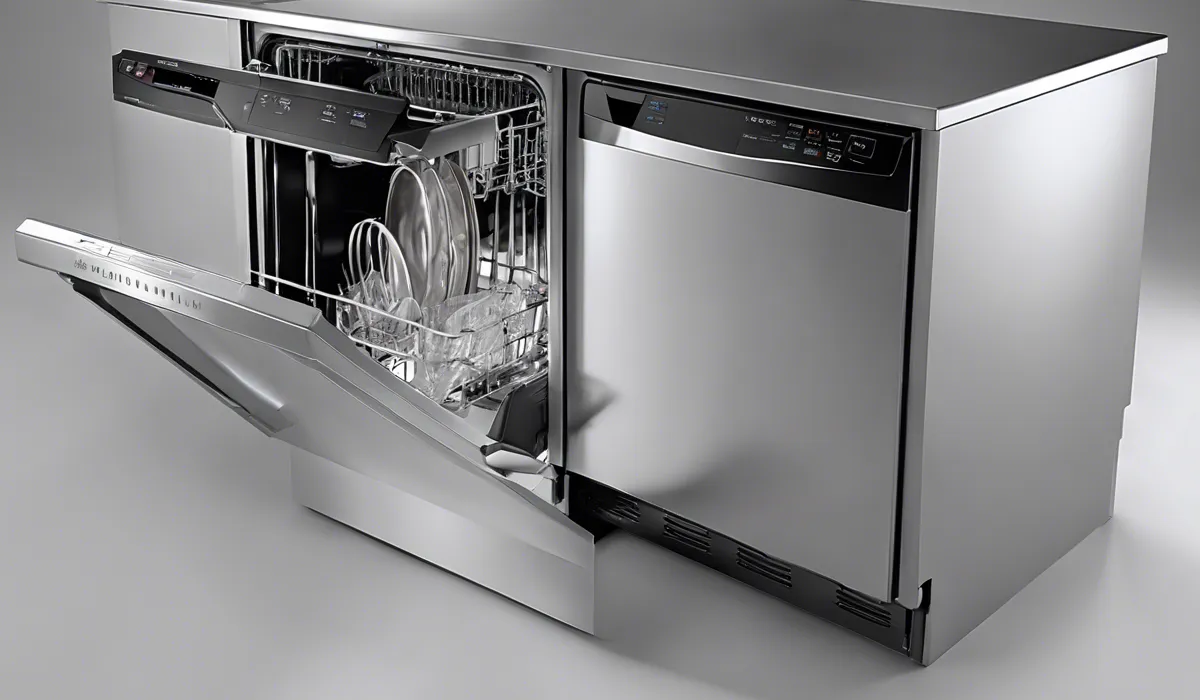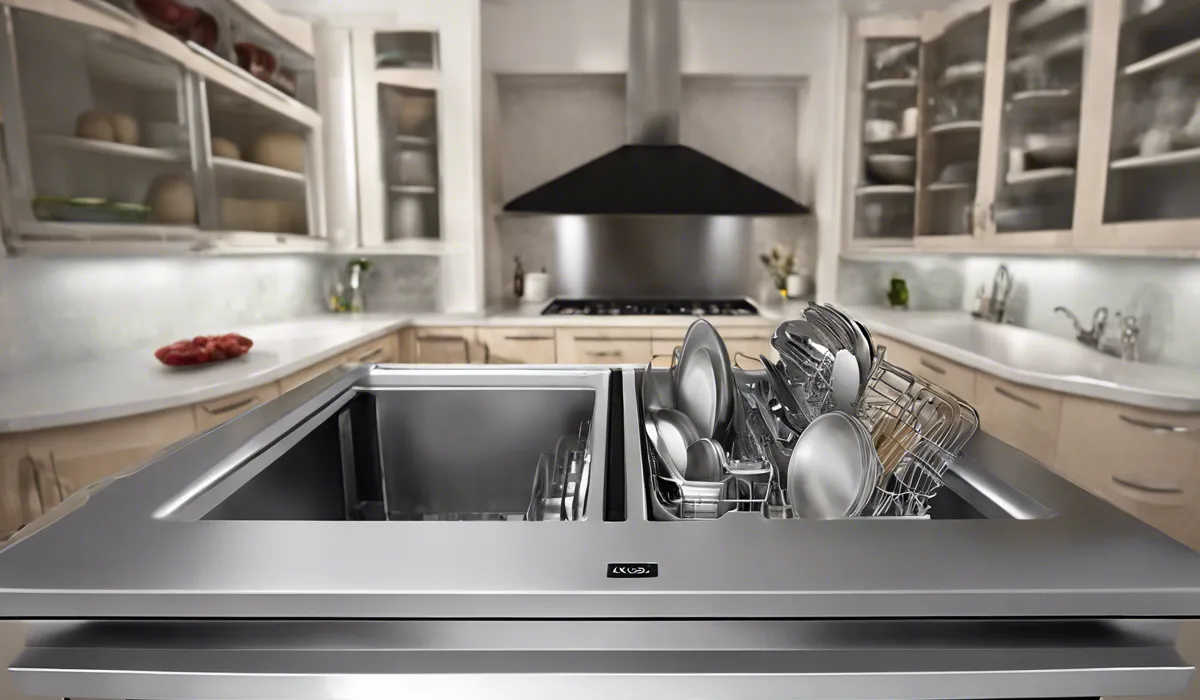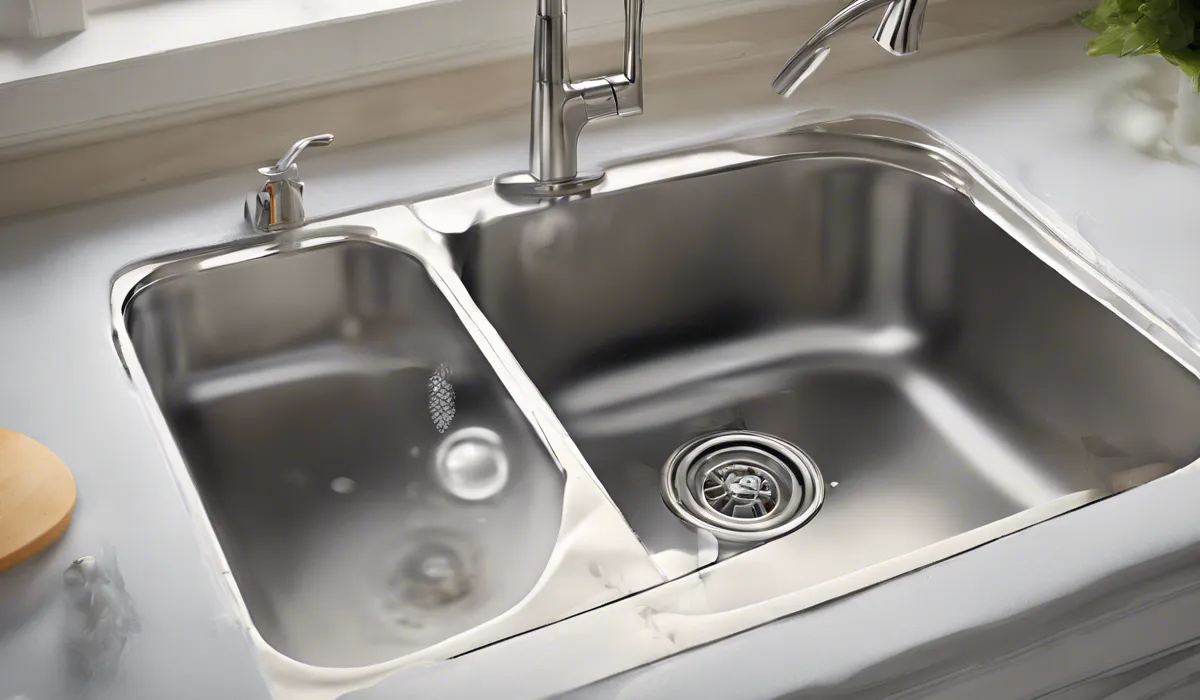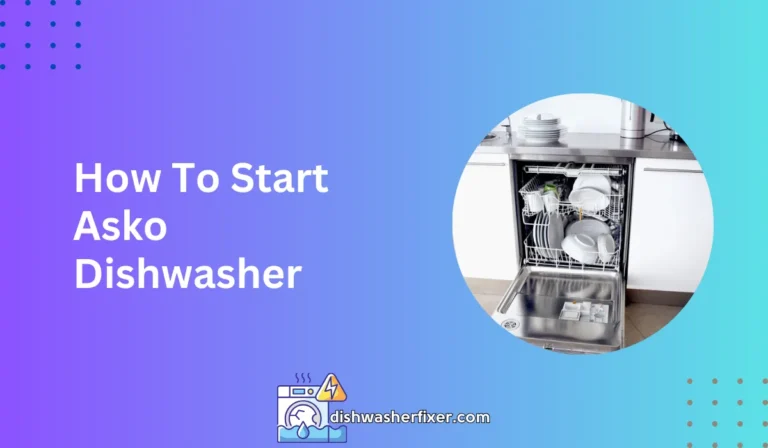Will Dishwasher Drain When Not On? Troubleshooting Guide
A dishwasher will not drain when it’s not on. It requires power to activate the drain pump. However, if the dishwasher is malfunctioning or if there’s a power outage after it’s been used, residual water may still flow out due to gravity or siphoning.
Understanding Dishwasher Drain Systems

How a Dishwasher Drains
A dishwasher typically drains by using a drain pump which is activated at certain points during the wash cycle. After the washing and rinsing cycles are completed, the dishwasher enters the drain cycle.
During this phase, the drain pump forces water out of the dishwasher and into the drain pipe or garbage disposal under your sink. This process ensures that the dishwasher is empty and ready for the next load.
The Drain Pump’s Role
The drain pump is crucial for the dishwasher’s operation. Its primary function is to push water out of the appliance and prevent water from returning.
When the dishwasher is on, the drain pump receives power and is engaged at the right times to carry out its task.
Is Passive Draining Possible?
Passive draining, or drainage without the aid of a pump, is generally not possible in a dishwasher. The system is designed to rely on the drain pump, and without it, water would remain in the unit until it is manually removed or the pump is activated.
Check Valves and Their Functions
Most dishwashers come with built-in check valves. These valves prevent the drained water from flowing back into the dishwasher. They are a critical component in the system, ensuring that once water leaves the dishwasher, it cannot return.
Common Reasons a Dishwasher Might Drain When Not On

Check Valve or Drain Loop Issues
Problems with the dishwasher’s check valve or drain loop can cause water to drain when the dishwasher is not on. A faulty check valve can allow water to flow back into the dishwasher.
If the drain loop, which is part of the hose that prevents backflow, is installed incorrectly or is malfunctioning, it may also lead to similar issues.
Sink and Garbage Disposal Connection Problems
Connections between the dishwasher and the sink or garbage disposal can be a point of failure.
If these connections are not sealed correctly or if the garbage disposal unit is clogged, it can cause water to back up and potentially drain into the dishwasher when off.
Malfunctioning Dishwasher Components
Other components of the dishwasher, such as a faulty drain pump or timers, can malfunction, leading to unintended draining. These components may require repair or replacement to restore proper function.
Siphoning Explained
Siphoning occurs when water is removed from the dishwasher due to a pressure difference caused by improper installation or height of the drain hose.
If the hose is positioned incorrectly, such as being too low relative to the dishwasher, it can lead to a siphoning effect and unintended draining.
Troubleshooting and Fixing Drainage Issues

Diagnosing Unexpected Draining
To diagnose the cause of unexpected draining, first, check the installation of the drain hose and ensure it is looped properly. Inspect the check valve and connections to the sink or garbage disposal for any signs of malfunction or blockages.
DIY Fixes for Simple Drainage Problems
For simple drainage problems, cleaning the drain filter, making sure the drain hose is looped high, and checking for clogs in the garbage disposal can be easy DIY fixes. Also, ensure that the check valve is functioning correctly and replace it if necessary.
Cleaning, Repairing, or Replacing Parts
If the issue persists, cleaning or replacing the drain pump and other components might be required. For any parts that seem to be malfunctioning, consult the dishwasher’s manual for specific instructions on cleaning or replacing those parts.
When to Call a Professional
If the problem is complex or if you’re not comfortable performing the repairs yourself, it’s time to call a professional plumber or appliance repair technician.
They can properly diagnose and fix the issue, ensuring your dishwasher operates as expected.
FAQs About Dishwasher Drainage
Will my dishwasher drain when it is turned off?
No, a dishwasher requires power to activate the drain pump and will not drain when turned off.
Can a dishwasher drain without power?
No, the dishwasher needs power for the drain pump to function, so it cannot actively drain without power.
Could water still come out of a dishwasher that’s not on?
Yes, residual water may flow out due to gravity or siphoning if there’s a malfunction or after a power outage.
What happens if my dishwasher stops mid-cycle due to a power outage?
If a power outage occurs mid-cycle, the dishwasher will stop, and water may remain inside until power is restored and the cycle is resumed or the drain pump is manually activated.
Is it normal for water to be left in the bottom of the dishwasher?
A small amount of water remaining in the sump area beneath the filter is normal, but standing water in the bottom of the dishwasher may indicate a drainage problem.
Final Thoughts
A dishwasher typically requires power to engage its drain pump and remove water. If the unit is off or experiencing a malfunction, draining won’t actively occur.
However, residual water might still escape through gravity or siphoning, even without power, particularly after recent use or during a power outage.
Useful Resources
- https://web.extension.illinois.edu/askextension/thisQuestion.cfm?ThreadID=26257&catID=32&AskSiteID=34
- https://www.dli.mn.gov/business/plumbing-contractors/minnesota-plumbing-code-frequently-asked-questions
- https://www.purdue.edu/engineering/ABE/INPREPared/protect-your-plumbing-and-appliances-during-a-winter-power-failure/





